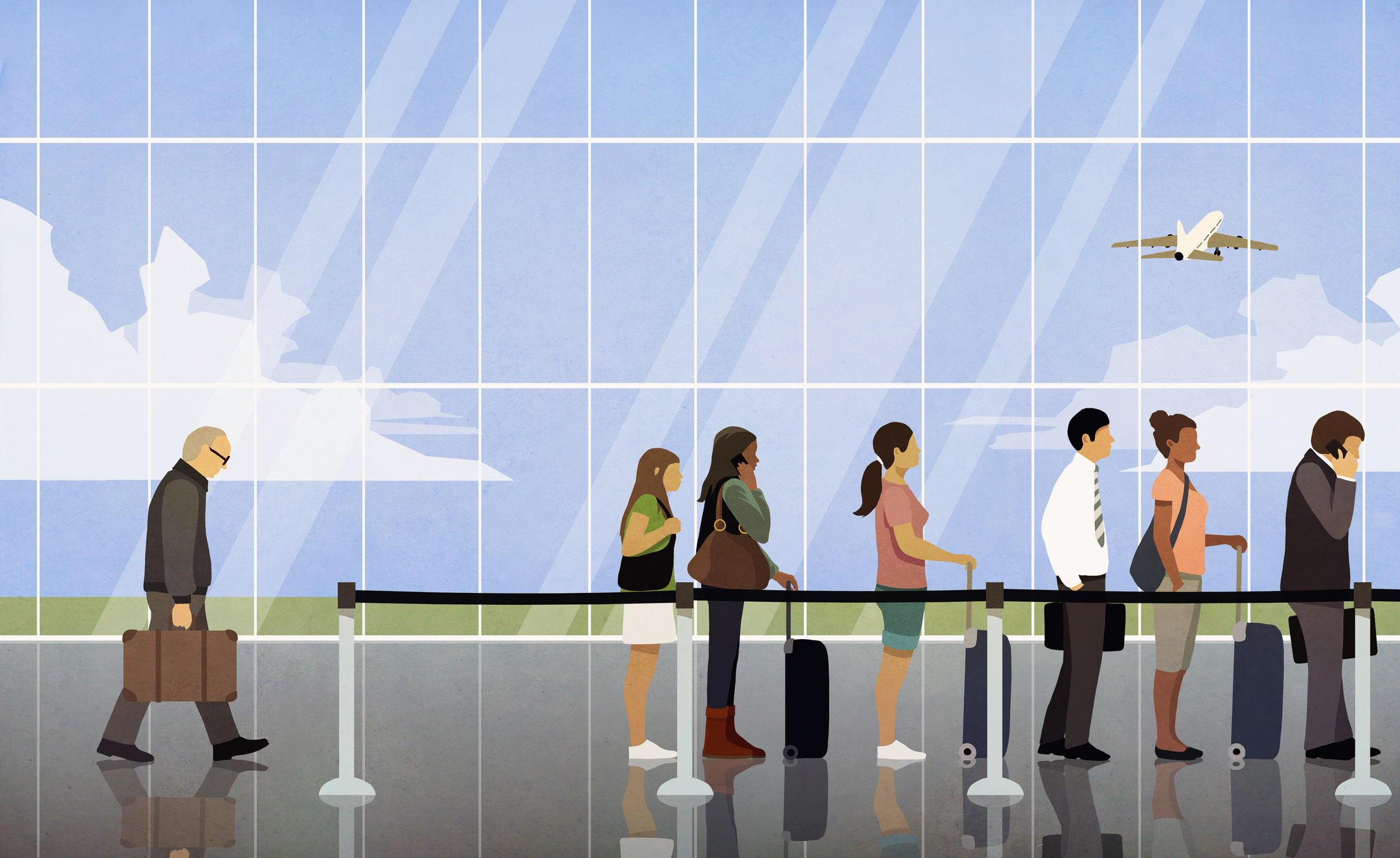The World’s Busiest Airports: Kiplinger Economic Forecasts
Find out how U.S. airports are faring and the outlook post-COVID-19


The aviation industry is a cornerstone of the economy not just because of its size but because its performance has an impact across the supply chain and can impact the economy via the tourism sector.
To help you understand this sector, our highly experienced Kiplinger Letter team will update you on major developments (Get a free issue of The Kiplinger Letter or subscribe). Here’s the latest forecast…
Five of the world’s top 10 busiest airports last year were still in the U.S., a drop from 2021 when domestic airports claimed eight of the top 10 spots.

Sign up for Kiplinger’s Free E-Newsletters
Profit and prosper with the best of expert advice on investing, taxes, retirement, personal finance and more - straight to your e-mail.
Profit and prosper with the best of expert advice - straight to your e-mail.
Hartsfield-Jackson Atlanta International Airport once again reigned supreme, for the second straight year, with passenger volume of about 93.7 million people.
The rest in descending order were: Dallas-Fort Worth, Denver, Chicago’s O’Hare, Dubai, Los Angeles, Istanbul, London Heathrow, New Delhi and Paris Charles de Gaulle.
Post-COVID-19 travel rebound
U.S. airports dominated the rankings for the past two years as domestic travel rebounded faster than in other regions.
Worldwide travel significantly rose last year. Expect most of the world’s busiest airports to be back to normal this year, either matching or exceeding pre-pandemic levels.
Only two top 10 airports, Denver and Istanbul, had more passengers in 2022 than in 2019. But 2023 demand is strong...
Airplane supply may be limited
Meanwhile, quality problems have forced Boeing (BA) to halt deliveries of some jets. The issue will leave airlines with roughly 9,000 fewer seats than planned during a summer travel season when U.S. passenger volumes may set a record.
The 9,000-seat figure suggests dozens of planes will be affected. In the U.S., United (UAL) and Southwest Airlines (LUV) are the two biggest buyers of Boeing’s 737 Max, though certain variants of the narrow-body jet, such as the 9, won’t be affected.
Less clear is whether Boeing will be able to deliver 400 737 MAX jets in 2023, which is its goal. The planemaker has delivered 113 through this year’s first quarter.
This forecast first appeared in The Kiplinger Letter. Since 1925, the Letter has helped millions of business executives and investors profit by providing reliable forecasts on business and the economy, as well as what to expect from Washington. Get a free issue of The Kiplinger Letter or subscribe.
Get Kiplinger Today newsletter — free
Profit and prosper with the best of Kiplinger's advice on investing, taxes, retirement, personal finance and much more. Delivered daily. Enter your email in the box and click Sign Me Up.

Sean Lengell covers Congress and government policy for The Kiplinger Letter. Before joining Kiplinger in January 2017 he served as a congressional reporter for eight years with the Washington Examiner and the Washington Times. He previously covered local news for the Tampa (Fla.) Tribune. A native of northern Illinois who spent much of his youth in St. Petersburg, Fla., he holds a bachelor's degree in English from Marquette University.
-
 Financial Planning's Paradox: Balancing Riches and True Wealth
Financial Planning's Paradox: Balancing Riches and True WealthWhile enough money is important for financial security, it does not guarantee fulfillment. How can retirees and financial advisers keep their eye on the ball?
By Richard P. Himmer, PhD Published
-
 A Confident Retirement Starts With These Four Strategies
A Confident Retirement Starts With These Four StrategiesWork your way around income gaps, tax gaffes and Social Security insecurity with some thoughtful planning and analysis.
By Nick Bare, CFP® Published
-
 What DOGE is Doing Now
What DOGE is Doing NowThe Kiplinger Letter As Musk's DOGE pursues its ambitious agenda, uncertainty and legal challenges are mounting — causing frustration for Trump.
By Matthew Housiaux Published
-
 A Move Away From Free Trade
A Move Away From Free TradeThe Letter President Trump says long-term gain will be worth short-term pain, but the pain could be significant this year.
By David Payne Published
-
 Trump’s Whirlwind Month of Crypto Moves
Trump’s Whirlwind Month of Crypto MovesThe Kiplinger Letter The Trump administration wants to strengthen U.S. leadership in the cryptocurrency industry by providing regulatory clarity.
By Rodrigo Sermeño Published
-
 What To Know if You’re in the Market for a New Car This Year
What To Know if You’re in the Market for a New Car This YearThe Kiplinger Letter Buying a new car will get a little easier, but don’t expect many deals.
By David Payne Published
-
 What Could Derail the Economy This Year?
What Could Derail the Economy This Year?The Letter While the outlook for the U.S. economy is mostly favorable, there are plenty of risks that bear watching.
By David Payne Published
-
 Three Ways President Trump Could Impact the Economy
Three Ways President Trump Could Impact the EconomyThe Letter Some of Trump's top priorities could boost economic growth, but others risk fueling inflation.
By David Payne Published
-
 10 Predictions for 2025 from The Kiplinger Letter
10 Predictions for 2025 from The Kiplinger LetterThe Kiplinger Letter As 2025 arrives, here are our top 10 forecasts for the new year.
By Letter Editors Published
-
 Europe Faces Economic and Political Headwinds Next Year
Europe Faces Economic and Political Headwinds Next YearThe Letter Challenges for Europe: Potential tariffs, high energy prices and more competition from China will weigh on the bloc in 2025.
By Rodrigo Sermeño Published